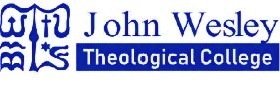Jewish population of Budapest in 1941 and 1945
DOI:
https://doi.org/10.59531/ots.2023.1.1.85-95Keywords:
surviving, Holocaust, historical sociology, Budapest, HungaryAbstract
One of the most important issues in the debate about the Holocaust is whether it is a historical or non-historical tragedy. Unexpected natural disasters, such as earthquakes and meteor strikes, are events outside human history - an important common feature is that their survival is only slightly related to people's social position. The more analogous the Holocaust is to this, the more extra-historical the Holocaust is. An important socio-historical feature of historically integrated ethnical, religious, class –based persecutions, on the other hand, is that people become less victims than other members of the persecuted group because of their wealth or their capital of connections with the persecutors, connections to the non-persecuted groups. Comparing the Jewish population of 1941 with the Jewish population of 1945 - based on specific housing registers - the study clearly concludes that the Budapest Holocaust is embedded in history: those with non-Jewish family members, the wealthier and those in occupations where the likelihood of being acquainted with the public sector and Christian colleagues is higher are much more likely to survive. This also implies that more active participation by non-Jews could have increased the number of survivors to a statistically significant extent.
References
Budapest székesfővárosi statisztikai évkönyve 1942 (1942): (Budapest Statistical Yearbook, 1942). – Budapest Székesfőváros Statisztikai Hivatala, Budapest.
Erős F. (2007): Trauma és történelem [Trauma and History]. – Jószöveg Műhely, Budapest.
Karády V. (2002): Túlélők és újrakezdők [Survivors and New Beginners]. – Múlt és Jövő, Budapest.
Karsai L. (2001): Holokauszt [Holocaust]. – Pannonica, Budapest.
Komoróczy G. (2000): Holocaust. A pernye beleég a bőrünkbe. – Osiris, Budapest.
Kovács András (1984): A zsidókérdés a mai magyar társadalomban [The Jewish Question in Contemporary Hungarian Society]. – In: Zsidóság az 1945 utáni Magyarországon [Jewry in Post-1945 Hungary]. Magyar Füzetek, Paris, 3-35.
Stark T. (1995): Zsidók a vészkorszakban és a felszabadulás után [Jews in the Shoah and Post-Liberation]. ¬ MTA Történettudományi Intézete, Budapest.
Majsai T. (szerk.) (2010): Tilalomfák ellenében. Köszöntő könyv Várdy Péter 75. születésnapjára [In Spite of the Prohibition Posts]. – Wesley János Lelkészképző Főiskola, Budapest.
Zsidó Világkongresszus Magyarországi Tagozata Statisztikai Osztályának Közleményei [Publications of the Statistical Section of the Hungarian Branch of the World Jewish Congress]
Downloads
Published
Versions
- 2023-05-15 (2)
- 2023-05-08 (1)
How to Cite
Issue
Section
License

This work is licensed under a Creative Commons Attribution-NonCommercial-NoDerivatives 4.0 International License.
OTS articles are subject to the Creative Commons Attribution-NonCommercial-NoDerivates 4.0 International Licenses Copyright Terms.




